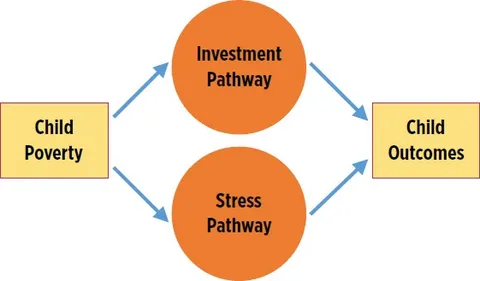For children born into India’s most marginalised communities, access to quality education often stops short of adulthood. That is why organisations like the Shanti Bhavan Children’s Project matter so much. As a dedicated boarding school charity in India, this institution commits from the child’s first day of school to the first day of work, offering a fully residential education and support system for disadvantaged children. In this article, we will explore how their model works in India, why boarding and holistic support make such a difference, how real-life outcomes show generational change, and what the lessons might be for wider efforts to end poverty through education.
What the Model Looks Like in India?
Shanti Bhavan is located in Tamil Nadu (India) and serves children from extremely poor families—often from lowest castes and socio-economic backgrounds. It offers a long-term educational model: children are admitted in early years (around age 4) and stay through to high school and then college, receiving lodging, meals, healthcare, tutoring, character development and career guidance.
Why is this so crucial in India? Because many children from disadvantaged homes face multiple barriers: lack of stable home environment, limited educational resources, high dropout rates, and restricted aspirations. The residential, holistic model removes or mitigates those roadblocks by providing consistent care, safe living conditions, dedicated teachers and a peer community focused on learning and advancement.
By embedding the children in a supportive community and providing beyond‐classroom support, the school shifts the equation from “survival schooling” to full participation and progression.
Why Boarding Education Can Change the Trajectory?
The boarding aspect of the model is a key differentiator. Living on campus means that children benefit from structured routines—meals, study time, mentoring—rather than depending on uncertain home environments. At Shanti Bhavan the support is not only academic but also social, emotional and material (clothing, medical care, dormitories).
This stability allows children to excel academically and to develop confidence, peer networks, leadership skills and global outlooks. Further, because they are removed (for most of the day) from the direct pressures of their home environments—poverty, manual labour, caste stigma—they are able to focus on learning and growth.
With strong outcomes—such as 97 % high-school completion and nearly 98 % college graduation for its children—Shanti Bhavan demonstrates how this intervention can alter trajectories.
In India, where educational resource gaps and social barriers remain vast, such a boarding school charity model can act as a ladder: children gain competence, credentials and social capital that they carry into adulthood and then back to their families.
Real Examples of Impact and Family Transformation
Consider a student admitted at age 4, from a family working in manual labour, lacking basic infrastructure. At the boarding school charity in India setting offered by Shanti Bhavan, this child receives free residential schooling, meals, a safe dormitory, regular mentoring, upfront college preparation—and eventually enters the workforce.
In practical terms: a 17-year intervention—the school calls it “from first day of school to first day of work”. The data indicate that 97 % of graduates earn more within five years of finishing than their parents did over a lifetime.
One concrete story: A graduate of Shanti Bhavan goes on to study engineering or computer science, lands a job at a national or global firm, starts supporting siblings through school, contributes toward family expenses and becomes a role model in the village. Through that one change, the family’s income, expectations and social status shift—and often the next generation follows a different path.
This ripple-effect means the model doesn’t only serve one child—it shifts entire families and communities. Alumni engagement and giving-back form part of the culture.
Addressing Structural Barriers: Social, Economic and Cultural
India’s poverty problem is deeply structural: caste discrimination, rural isolation, under-resourced schools, gender bias and economic precarity all combine. The boarding school charity in India model helps combat these structural issues by:
- Selecting children regardless of caste or wealth and offering full support, thus reducing barriers of cost and social stigma.
- Providing a high-quality curriculum aligned with national standards (ICSE/ISC) and preparing children for the global labour market rather than limiting them to very local jobs.
- Creating a peer community of learners who share similar backgrounds, promoting aspirational culture, mentorship and consistent support.
- Enabling children from disadvantaged households to take time for study rather than wage-earning, thereby breaking the cycle of child labour or early school drop-out.
While the model is not immune to emotional and social challenges—such as being away from family or coping with expectations—its long-term holistic nature makes it one of the strongest approaches to breaking cycles of generational poverty.
What Makes the Model Sustainable, and What Are the Challenges?
What sets Shanti Bhavan apart is the depth of the intervention (17 years of support), the boarding/residential environment, the high quality of education, and the alumni network/community ethos. The charity has high ratings for accountability and impact. For example, one external evaluator gave it a 92% score for accountability and finance.
But challenges exist. Running a residential school with high standards is resource intensive. Scaling this model across India’s millions of disadvantaged children is extremely demanding. Emotional burden on children separated from families for years must be managed. Also, graduates may return to home communities with different expectations and pressures.
Despite these challenges, the success of this model provides an evidence base: when children from India’s lowest socio-economic backgrounds are given stable, long-term, high-quality support, the impact multiplies beyond the individual.
Conclusion
In the Indian context, where educational and economic inequality remain entrenched, a boarding school charity in India such as Shanti Bhavan offers a compelling blueprint. By combining residential care, rigorous education, mentoring and career pipelines, it enables children born into poverty to not only finish school and college, but to shift their own families’ social and economic trajectories. The result is not just individual uplift but community transformation. For donors, educators, policy-makers and philanthropists interested in meaningful change, the model shows how targeted, long-term investment in education can truly break generational poverty.
And as a side note, supporting children’s education is vital—but whether through tools on campus or in home-study, resources matter. For example, quality stationery sets can support study habits and motivation. Explore a high-quality stationery kit online here—a small yet meaningful investment in a learner’s environment.








